

Wargame: European Escalation is an interesting blend of World in Conflict and R.U.S.E. It is an RTS game where you play as either a NATO or Warsaw PACT Commander and play either a singleplayer campaign, Skirmish or Online game with other Commanders. Unlike in a lot of RTS games you do not construct your own base, and you only deploy the units you researched beforehand. To get a fuller explanation of what Wargame: European Escalation is about I wrote this Guide that will hopefully grant you all the insight you need, on the basic level at least. It will not be a full Guide, describing all the possible units and combinations, but allow you to build your own force and understand the victory conditions and controls within the game.
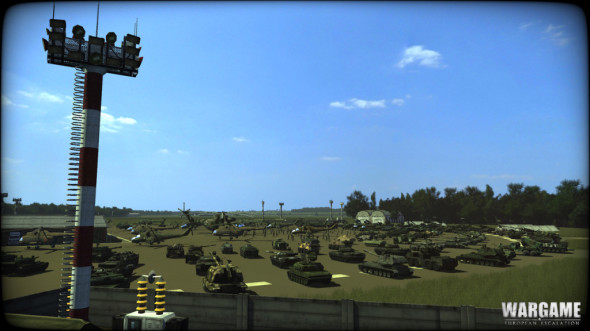
Will you be ready?
When you first enter the game you will have to register an account. This is by no means an actual problem, and only serves for the game to keep tracks of your Statistics and “Research” online. Once you log in you will have a number of possible options as to what you can do, or to give you a better idea of what can and cannot be done just now. Let us start off by talking about your Deck.
When you start the game you will have two Decks at your disposal for Online games. The Basic Nato and Pact Decks have a mix of different unit types, as such giving you a fair chance in your first online or Skirmish games. By clicking the Deck button in the bottom left corner of the screen you can View, Create and Edit your Decks. Your Deck is, in essence, what types of units you will have at your disposal during an Online Battle or Skirmish. As such you can create unique Decks, with your own Unit choices, in order to suit your personal Tactics and Strategy. You can put a higher emphasis on Tanks, or on Airborne Infantry, with Anti-Air Missiles or maybe Rocket Artillery. Any Deck you desire to create has 25 “Unit Slots”, spread out over different categories.
Logistic Units include Command Vehicles (CVs) and Ressuply Vehicles (Trucks and Choppers). The vast majority of Logistic Units do not have any methods of protecting themselves, and their role is that of support and control to your army, rather than active combat (more on that later).
Recon Units are different light and quick vehicles with excellent Optics. Some nations will have access to Recon choppers, giving them a huge advantage when fighting in open fields. Certain Recon Units will be fitted for combat (such as the US Bradleys) but if they are not supported by other units they will quickly fall to enemy fire.
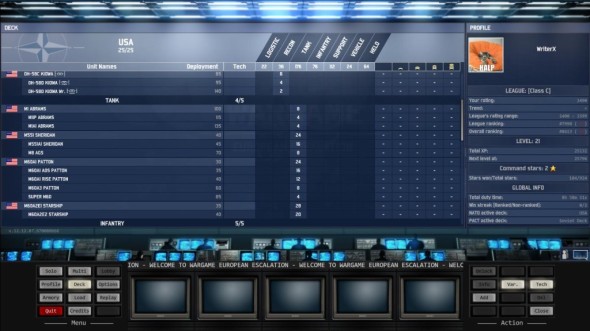
Having just one tank type is not enough. The more you have the better you can adapt to the battlefield.
Armored Units are, in essence, Tanks. Each side will have a selection of different tanks from different nations, each one with its strengths and weaknesses. When trying to understand the strengths and weaknesses of each tank use the “Info” button on the right hand side while examining the tank types. You can also explore the different tanks using the Armory function, this way you can also compare the Tanks from opposite sides. Certain tanks might be tougher, other tanks might have better guns, while others yet might have AT missiles, making them even deadlier than normal tanks.
Infantry Units are just that. They will always come together with a vehicle that will be used by them as a form of transport. In general you will find four unit types. “Riflemen” have standard Assault Rifles, RPGs and grenades. Anti-Tank infantry will have specialist equipment to deal heavy damage against tanks. Anti-Air Infantry, you guessed it, will shoot down enemy choppers effectively. Lastly, there is also Recon Infantry. They tend to be superior in combat when compared to ordinary Riflemen, with much better equipment, however they are not frontline troops. Just like other Recon Units your Recon Infantry will have excellent Optics, and with their “small size” they can safely watch a battlefield from woodland without being bothered at all.
Support Vehicles are a wide category. They will include Tank Destroyers, Support Vehicles, Artillery and Anti-Air Vehicles. These units have a wide range of uses, often depending on your own needs, and as such both NATO and PACT nations will offer you a wide range of units in almost any area. Commonly Support Vehicles lack proper armor. As such, even though they excel at their given tasks they cannot be “generalists”, like Tanks or Infantry units.
Vehicles are usually all the Land Transport Vehicles that you can call in together with Infantry. The reason for this category is rather simple. If your Infantry loses their designated Transport you can call in fresh APCs for them. It should be noted that despite their limited armor and offensive abilities certain Vehicles will be deadlier than others. For example, higher level Soviet BMPs will have AT missiles capable of taking out enemy tanks with single hits. I have, to some degree, managed to use Vehicles as a cheaper alternative to Support and Armored Units.
Helicopters include both Transport and Assault Helicopters, and this is the category you have to pay the most attention to. There are many different Choppers for you to choose from, and if you do not check their details you might end up with a Squadron of very specialist Choppers, that will actually be completely worthless for your current situation on the battlefield. One such example are the upgraded choppers from your Starter NATO Deck, because they are equipped purely with Anti-Tank missiles, making them hopeless against other choppers and infantry.
When you have a level 1 Commander you will have only your most basic NATO and PACT vehicles from your Starter packs (and some additional vehicles from your Singleplayer Campaigns). As you finish Missions in the Campaign and gain Levels through Online or Skirmish games you will obtain Command Stars. Command Stars are used for one thing only, Research. Why is Research important? You will unlock more types of units for your Decks, as well as unlock improved versions of different units for you to pick from during a battle. Research works in a “linear” manner, so when you have the basic T-62 you will unlock next “Levels” of the vehicle. What is intriguing is that during the game you do not get stuck with the more expensive and higher level tank, but instead you can purchase any of the Tanks you unlocked from that “line” (so, you can still call in your Basic T-62s if you want to). It should be noted that while you unlock better versions or levels of a unit you do not lose additional “slots” in your Deck. So, while there might be six variants of the T-62 the entire unlocked line will still take up only one “slot” in your Deck.
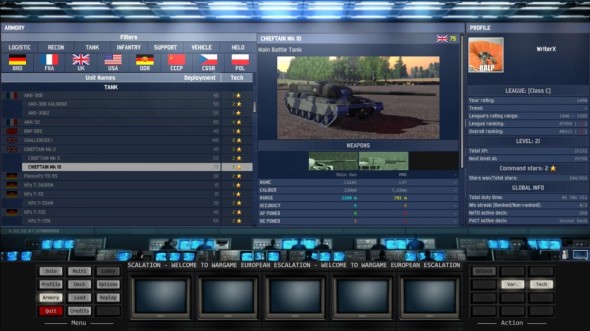
When planning what to research next consider what best fits your possible Decks. Do not unlock vehicles you do not need, just for the sake of the achievement.
There are two things to be noted about Research. Firstly, higher level units tend to be more expensive when “Purchased” during the battle, and you will have a very limited number of them. The most expensive and difficult vehicles to research might appear in such little number that you will only have four vehicles of the type to call in, as such losing them costs you dearly, because you lose your most and expensive and top units. The second thing is that certain vehicles are shared among different nations and unit types. For example, a lot of Infantry squads share specific vehicles, and unlocking the entire BMP-1 line could mean that any Infantry you unlocked that uses BMP-1s will have its entire line unlocked. Another example I can think of are Soviet Special Forces and Polish Paratroopers. Both of these Infantry types can be deployed using Soviet Choppers, as such the benefit of unlocking improved choppers benefits both groups.
So, what is the aim in Wargame: European Escalation? There are different game types but by far the most common one is “Destruction”. Your mission during these types of games is to eliminate more of the enemy, point wise, than the enemy can eliminate of you. The game ends when the time runs out, when a certain point limit is reached, or when one of the sides is “Eliminated” (through the destruction of all Command Vehicles).
The second Game mode is Siege. In essence, one side is worse off, and has to protect itself from the attackers. In many regards it is just like Destruction, except that the Defenders cannot call in reinforcements.
Then you have the Economy Game Mode, where the side with the most collected points wins. This calls for taking “Zones”, and as such we might consider it similar to Destruction, because you will have to destroy enemy Command Vehicles in order to achieve superiority.
Lastly there is Conquest, and here you have to “Cap” a certain number of smaller zones in order to win. Unlike with ordinary Zones these smaller Victory Zones can be taken over by any combat unit and not just Command Vehicles.
At the start of any game you will be able to purchase units and deploy them within your available starting zones. Depending on the map size and number of players there can be more than one starting zone. At the same time you will be able to reposition your “starting” Command Vehicle and Forward Observation Base. Your FOB is unique, in the sense that it is the only structure that you can purchase, and you, as a player, can only have one at the start of a battle (Edit: Here I was wrong, you can have more than one. Each subsequent FOB costs 100 points, however, you can only buy them and place them during the preparation phase of the game).
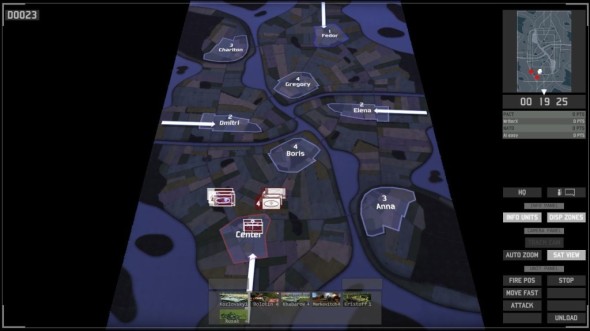
During a Skirmish Game against the AI you can test your deck, try out different tactics and learn the basics of the game. During this battle I moved two “Groups” to Dmitri and Boris, leaving Anna exposed (this could bite me back later).
Now comes the tough part, the battle itself. Worry not, it’s not as hard as it looks.
The map is divided into numerous zones. Each zone when captured provides you or your team with Resource Points that can be used to call in more units during the battle. The more zones you hold the higher your income, and the more units you can call in. These zones can be captured only by your Command Vehicles. In order for them to capture a zone your CV has to remain stationary within that zone (in the case of Command Helicopters, on the ground). Moving your Command Vehicle makes it lose its hold on the Zone, that is why you should usually try to hide your Command Vehicle in Cover, so that the enemy has a hard time hitting and destroying it. The reason is simple, Command Vehicles are very expensive to replace, and depending on the game mode they might offer a very high point bonus to the enemy. Also, take note that there are two types of Zones. Zones on the border of the map will have giant arrows pointing toward them. When such a Zone is captured it can be used by you and your allies to call in Reinforcements. If such a zone is closer to your frontline you will have the advantage of your units reaching the front quicker. This also means that if you lose your original “Starting Zones” you can still cap a different Reinforcement area and call in more units.
During your Deployment you will have a limited number of points to spend on any units that are available to you, through your deck. If the total sum of points for your team is low you can consult with the rest of your team what manner of units will they purchase, so that you do not end up with tanks only. This is also the time when your team mates might discuss the overall strategy, who will advance where, and with what. Although there is no Voice Communication you can use the Chat and Flares to mark crucial locations.
You will automatically lose the game if your team loses all of its Command Vehicles, do not leave them unprotected! Always keep a few units nearby to act quickly if the enemy drops in with choppers or fast moving vehicles, to counter the threat. It is not uncommon for enemy players to sneak right next to your reinforcement zones and steal any supply trucks you call in. The enemy will usually strike from the direction you least expect!
Now, a brief guide to your countless unit types. First let us take a look at your offensive capabilities. Your Infantry is often loaded on transport vehicles, whatever those may be. While unloaded they will be able to use any equipment they have been allocated, and due to the limited effective range of these weapons they tend to be terrible at combat in the open. They excel at fighting in woodland and urban areas, benefiting from cover and hills, since the enemy will be expertly ambushed at point-blank range, usually from the flank. While slow when disembarked Infantry units benefit greatly from their transport vehicles, and a quick raid behind enemy lines is perfectly doable, as long as the vehicles do not encounter any obstacles or run out of fuel. Your Anti-Tank and Anti-Air Infantry Squads will be smaller than your standard Recon or Riflemen Squads, so you should support these smaller squads with other units.
Tanks come in many forms and shapes. Main Battle Tanks are your “Average Joes” (they tend to do well only against other Vehicles and Tanks), but they are by no means weak. A lot depends on the Tank Model you research and use. A T-34-85 will make a terrible Main Battle Tank for your force, while the T-80 will be a true monster, if very expensive. When deciding what Tank your deck should use consider the weapons each tank comes with, and what are their armor values, speed and other parameters. In some cases you might benefit more from a “Solid Front” than better guns. Keep a variety of tanks in your deck. The most expensive tanks might be the best, but if you lack Anti-Aircraft defenses, or if the enemy relies heavily on infantry you might lose your precious tanks, while not causing any damage in return.
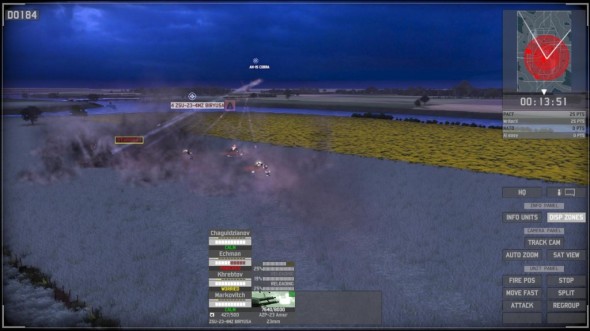
My Quads were poorly positioned and a Cobra decided to taunt them with long range fire. At the bottom of the screen you can see the “Status” of my Quads. Their Morale (Calm, Worried Panicked), their “Health” (crossed out boxes indicate damage), the fuel can indicates their fuel supply, while a bit to the right you can see the status of their main weapon. Before a weapon fires it has to Reload (top bar) and Aim (bottom bar). depending on how well the enemy is hidden, and how close you are the chance of hitting the enemy might be higher or smaller.
Your Choppers make perfect Raid units, if the enemy forgot about any form of air defense (take note, vehicles with MMGs and Infantry units with RPGs can still fire at Choppers, if they fly in too close). If the enemy is calling in reinforcements your Choppers could cut off crucial supply lines, and destroy, for example, fresh Tanks driving to the front. Unlike other units, choppers cannot capture Supply Trucks, which does not mean they cannot destroy them. In general, your choppers tend to have a mix of long and medium range weapons (some choppers are specialized in Anti-Tank or Anti-Air however, so they will lack any other weapon than missiles). They do not have to fly up close to fire effectively, and if they are ordered to an open plain they will land and wait behind cover. As such you can use Choppers defensively as well, and order them up in the air when the enemy is attacking, from behind a forest. Take note, choppers need to land in order to be repaired and resupplied by FOBs or Supply Trucks.
You have many defensive tools at your disposal. Anti-Tank and Anti-Air vehicles are varied. Anti-Tank vehicles tend to lack armor, while having very powerful missiles to take out enemy tanks with. This makes them perfect for defensive operations, since any planned assault will be cut short at a long distance. Anti-Air units come in two forms, “Quads” and Missile defense. Quads have a mildly short range, and in an open field choppers will usually have a longer range than Quads, resulting in a loss to these defense guns. However, if hidden in forests, or behind cover, they can suddenly spring a trap on overly confident chopper commanders. Meanwhile missile air-defense means sudden and brutal death to any chopper within their incredibly long range of fire. There is a problem however, Missile Air-Defense costs a lot of resources, if you want to keep them supplied, and their rapid rate of fire sometimes means that they waste more missiles than they should. While they would stop a small chopper squadron in one salvo an overwhelming number of choppers could out-do them, unlike Quads that have a much higher supply of ammo if limited range.
Artillery also comes in two forms. Guns and Missiles, both have their benefits, just like in the case of your Anti-Air methods. Artillery Guns fire in Salvos, and once ordered to focus fire at an area they will fire a whole barrage, spread over the target area (10 Shots). The closer the target the smaller the spread. Missile platforms will fire off much more missiles at once, creating a far deadlier barrage, while making it far more costly at the same time. Your artillery has two roles, the physical destruction of the enemy (which calls for direct hits usually) and the destruction of the enemy’s morale. Even if the enemy is not hit directly they may lose their will to fight, resulting in a route, or much slower firing speeds. Due to this your artillery can do miracles during a defense or attack because the weakened enemy troops will be unable to continue the fight.
There are other vehicles, such as APCs, that have a variety of deadly weapons against specific foes, while lacking in protection. It is impossible to generalise them, since there is so many of them, but each side of the conflict will have an impressive collection of both cheap and top quality Support and Transport Vehicles. Most of the time you will have to hide them behind cover, and only use them when you have a clear advantage, since almost any enemy tank that gets the first shot will make it the only shot.

Resupplying in action. You can see how my choppers and empty trucks are draining the FOB for a number of different tasks. Due to their speed it is sometimes quicker to send a chopper back to base than to wait for a Truck to come to it.
What of Logistic Vehicles? As mentioned earlier, your Command Vehicles are tasked with taking over Zones, thus giving your side Resource Points. Your Command Vehicles vary in a number of ways. You can have “Cars”, that are extremely fragile, but cheaper and quick, “APCs” that might have a weapon to protect themselves from the enemy (or even a main gun to use against enemy vehicles) and Choppers that are the quickest of the Command Vehicles, but being unable to hide within woodland – the most exposed. What Command Vehicles you use depends on your play style. Some people use Choppers to perform “Quick Attacks”, together with Command Choppers to cap zones quickly. Others prefer the easier to hide Command Cars. Lastly, your Supply Trucks and Choppers. This is what you will have to use in order to survive and win any game. Your Supply Trucks, when called in, will be fully stocked with “Fuel”, to be used as Ammo and Repairs for all of your units. When you Supply Trucks are stationary they will create a Zone around them, where any unit within the zone (and stationary) will refuel, repair and restock any lost ammo. Certain types of ammo will cost the Supply Trucks and Choppers more fuel, so you might need more than just four Trucks (or two choppers) to fully resupply your frontline force. When a Supply Truck or Chopper runs out of supplies they can gain back the lost Fuel at an FOB. Take note however, the FOB has limited supplies as well, and it may become empty during the course of the battle, in that case your Empty Trucks and Choppers will remain empty, the enemy can still get points for capturing or destroying them however. Most importantly, your Supply Trucks and Choppers do not use up their own supplies while traveling. This means that they will always deliver a perfectly untouched load, wherever your forces may be.
A handful of handy tips
So, you have the basic idea of how the game works, and how the different unit types operate. Below are a few handy tips I think might save you a lot of trouble, whatever the cause may be.
I cannot defeat them! – This is bound to happen, sooner or later. You meet an enemy, and no matter what you do you cannot punch through. You rip out your hair and scream at the top of your voice, yet nothing changes. Usually an enemy who is well balanced and well positioned will have a good mix of Anti-Tank and Anti-Air defenses, as well as some Anti-Infantry defenses that will halt any form of possible attack to work, or will it? There are two things you can do to annoy an enemy who is a “Fortress”. If you intend to push forward use artillery. If you observed where the enemy shots came from, and how concentrated they were use Artillery Guns or Missiles and bomb the hell out of the enemy front. With some luck you will damage or even destroy enemy units, forcing the enemy player to retreat, or at least to move his troops back. This will allow you a safer advance forward, thus cutting the distance to your enemy, even if they return to their positions. The alternative is focusing your forces in another area, help your ally in their own attack, while keeping an eye at your own front.

The realities of Online Gaming. Our side was utterly taken by surprise when an Armored Soviet Rush smashed right into our base. Thanks to a lot of creative thinking, and cunning tactics, we still won, despite the setback.
Morale is everything. – You might have the toughest and meanest units on the battlefield, but once their spirits get drained by constant enemy fire, and artillery, they will panic and flee. Low Morale means that units will fire much more slowly, eventually leading to a route. A route means you will lose control of your troops who will then begin to flee away from the enemy. This can mean that your units leave the safety of cover, or that a surprise flank attack makes them flee into the open for the other hungry enemy guns. If you are under concentrated enemy fire, or if artillery is pounding down on you, change your position! If the enemy becomes aware of how bad a situation you are in you will lose your front.
Balance is everything. – When planning your force or Deck balance is crucial. Some people may use Rush tactics, sending in countless Choppers or Tanks in an attempt to crush you quickly. If that happens, and you know where the attack will be coming at, prepare your force accordingly. Forces that are focused in one area (aka. Only Armor or Choppers) will be easy to take out as long as you have something to counter them with. In the case of Choppers Quads can do the job fine, if hidden behind cover. Missile defenses will be far more efficient, but they could drain away your supplies. In the case of an Armor Rush it is likely the enemy is using tougher tanks, so try to get a drop at their flank, or deploy units with Anti-Tank Missiles supported by Supply Trucks. A well thought out front will stop any daring Rush.
Review your Victories (and defeats). – You can save the replay for each battle, and it is a good idea to watch them once or twice to see what you did wrong, and where the enemy did something right. If you want to improve your strategy in Wargame: European Escalation you will have to spare some gaming time in order to learn something new, or at least, to improve yourself.
What just happened?! – Sometimes you will notice that during a battle, or even when traveling, your vehicles might suffer from a number of different “Effects” that will negatively influence their combat effectiveness or movement. While traveling through woodland your supply trucks could be de-tracked, your tanks could have a damaged stabilizer, or your choppers suffer a fuel leak. Most of these effects can be fixed, after some time. There is very little you can do to stop them from happening. On the most basic level keep your units well hidden and protected, and do not send your vehicles through woodland or swamps.
Quick Travel – When you want to make your units reach a destination faster you can give them the “Fast Move” order, from the bottom right corner of the screen. This means that, if able, your vehicles will use main roads to travel far more quickly to a target destination. Be wary though, the enemy could prepare ambushes on or near these roads, so your Supply Trucks could be captured and other units destroyed.
Check the Wiki – When in doubt, or too lazy to go in-game to check the information about your vehicles you can check the Wargame: European Escalation Wiki. While you might not get much background info about all the units in the game it is enough to get a solid understanding of how good certain units are.

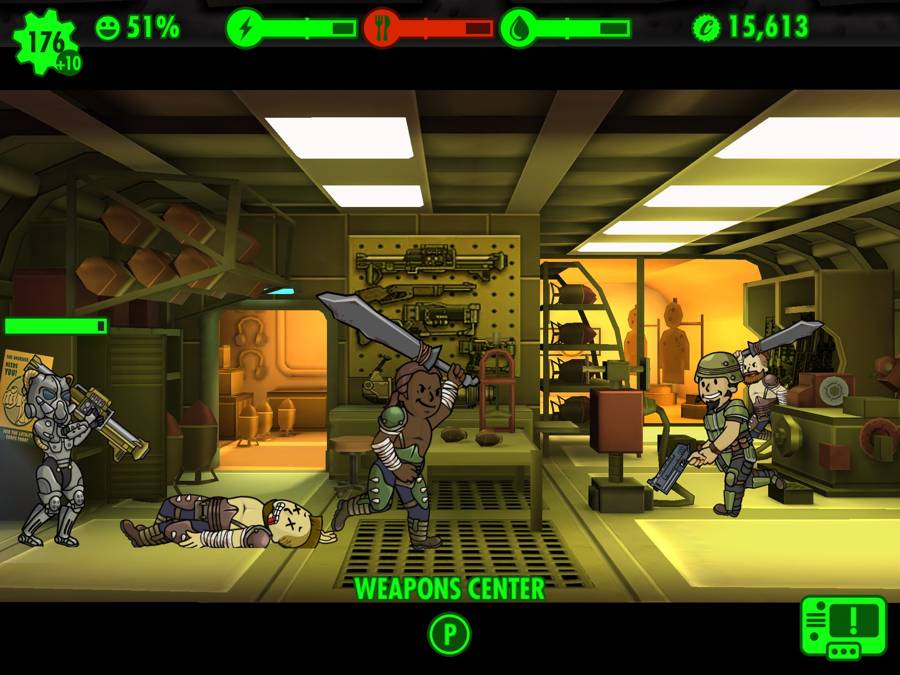

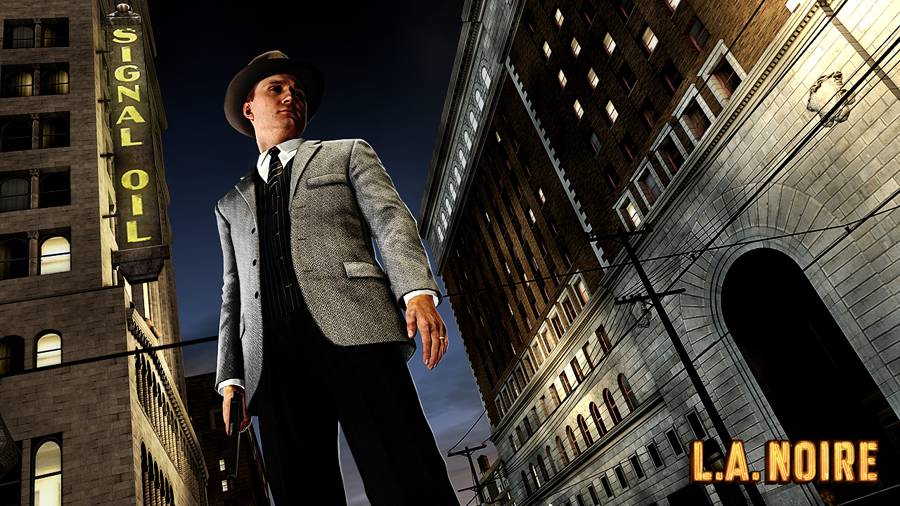
 . Plays, 3rd October, 2015
. Plays, 3rd October, 2015 Civilization V: Brave New World Review
Civilization V: Brave New World Review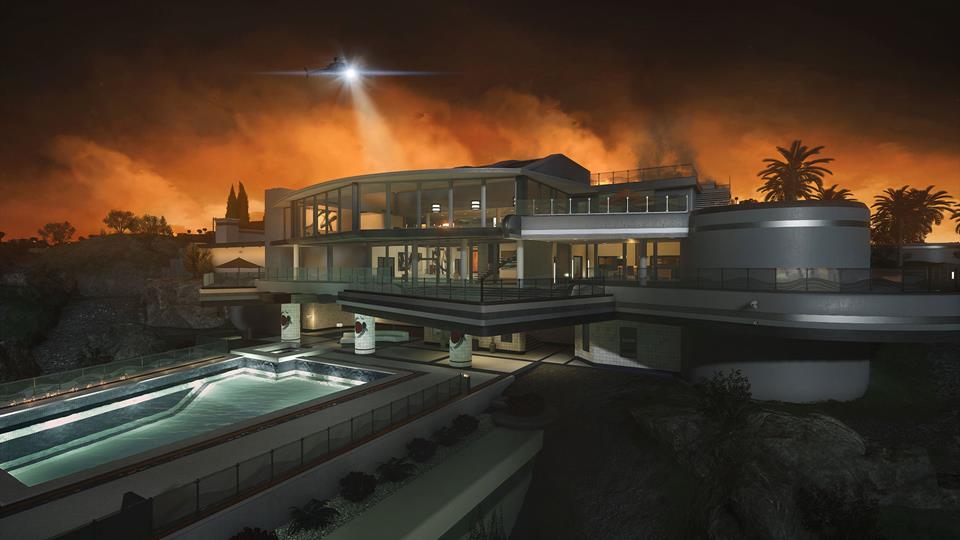 Battlefield Hardline map tips: The Block, Growhouse & Hollywood Heights
Battlefield Hardline map tips: The Block, Growhouse & Hollywood Heights The Best Places Online to Buy DRM-Free PC Games
The Best Places Online to Buy DRM-Free PC Games Ultimate Guide to Survival and Crafting Games 2015
Ultimate Guide to Survival and Crafting Games 2015